
Venezuelan Tourism and Foreign Trade Minister Felix Ramon Plasencia Gonzalez will visit Iran in the next few days to discuss tourism cooperation, Caracas’ Ambassador to Tehran Carlos Antonio Alcala Cordones has said. “Felix Plasencia is going to visit Iran next week to sign a Memorandum of Understanding on expansion of tourism cooperation with the Islamic Republic,” IRNA quoted the envoy as saying on Wednesday. The Venezuelan ambassador made the remarks on Wednesday night in a meeting with Iran’s Cultural Heritage, Tourism and Handicrafts Minister Ali-Asghar Mounesan, noting that Plasencia’s visit is aimed at paving the way for more collaboration in the tourism industry. The ambassador also noted that he has been in Iran for two years and it is obvious that a short visit by the Venezuelan minister will not give him enough time to get acquainted with the history and tourist attractions of the country, the report said. Cordones underlined that joint venture in the tourism industry will bolster ties between Iran and Venezuela and help the two countries’ economies. He further noted that Plasencia intends to offer a pavilion to Iran at the International Tourism Fair of Venezuela. For his part, Mounesan said that during a webinar with former Venezuelan tourism minister, both sides decided to expand tourism ties and hold an introductory tour. The Iranian minister added that the two countries are going to sign an MoU to expand cooperation in the tourism industry and that tourism practitioners from Venezuela and Iran will hold talks for future cooperation. The Ministry of Cultural Heritage, Tourism and Handicrafts has determined a five-day trip for the Venezuelan delegation, but it seems that they are going to stay less time in Iran, he noted. The relationship between Venezuela and Iran became more serious following an official visit by the then Venezuelan President Hugo Chavez to Tehran in 2001. Now, the two nations are determined to expand cooperation in tourism, the news agency explained. According to previous agreements, Venezuelan and Iranian nationals can have visa-free travels to each others' countries to stay for two weeks. The visit by the Venezuelan minister is expected to pave the ground for expansion of cooperation in cultural, economic, and political fields as well. Last November, Mounesan said that visa-free access and direct flights are the two important advantages for Iran and Venezuela to develop tourism cooperation. “We are ready to expand our relations with Venezuela in the arena of tourism by organizing familiarization tours in both countries with the participation of the private sector,” Mounesan said in a meeting with the Venezuelan ambassador. Back in October, Mounesan exchanged views with Plasencia, in a video conference to deepen tourism relations, especially through simplifying visa rules, launching fam tours, and setting up exhibits. They also agreed to sign a memorandum of understanding in a bid to broaden bilateral ties. Iran expects to reap a bonanza from its numerous tourist spots such as bazaars, museums, mosques, bridges, bathhouses, madrasas, mausoleums, churches, towers, and mansions, of which 24 being inscribed on the UNESCO World Heritage list. Under the 2025 Tourism Vision Plan, it aims to increase the number of tourist arrivals from 4.8 million in 2014 to 20 million in 2025. So it will undeniably try its best to achieve a relatively ambitious goal but when that happens the travel industry is likely to look more altered.
Create: Feb 20, 2021 Edit: Feb 20, 2021 Regional News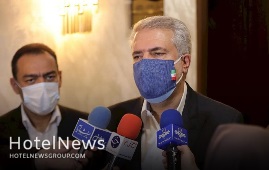
Iranian tourism minister Ali-Asghar Mounesan on Tuesday inaugurated 206 tourism-related projects in Tehran province through a video conference. The tourism infrastructure of Tehran province is essentially needed to be developed due to its political and commercial importance, IRNA quoted the minister as saying during the inauguration ceremony. The projects, which include hotels, apartment hotels, eco-lodge units, tourist complexes, boutique hotels, traditional restaurants, travel agencies, and handicrafts workshops, are estimated to generate 936 jobs. Furthermore, the mentioned projects will be adding 816 beds to the hospitality sector of the Iranian capital. Establishing more eco-lodges as well as different types of accommodation centers could facilitate traveling and staying in this metropolis, the minister said. Referring to the outbreak of the coronavirus and the problems and issues it has caused to the travel sector, Mounesan noted that smart travels under the supervision of the tourism and health ministries is the only way to overcome the current situation. Hugging the lower slopes of the magnificent, snowcapped Alborz Mountains, Tehran is much more than a chaotic jumble of concrete and crazy traffic blanketed by a miasma of air pollution. This is the nation's dynamic beating heart and the place to get a handle on modern Iran and what its future will likely be. The metropolis has many to offer its visitors including Golestan Palace, Grand Bazaar, Treasury of National Jewels, National Museum of Iran, Glass & Ceramic Museum, Masoudieh Palace, Sarkis Cathedral, Tehran Museum of Contemporary Art, Carpet Museum of Iran, to name a few. The first time Tehran is mentioned in historical accounts is in an 11th-century chronicle in which it is described as a small village north of Ray. It became the capital city of the Seljuk Empire in the 11th century but later declined with factional strife between different neighborhoods and the Mongol invasion of 1220.
Create: Feb 20, 2021 Edit: Feb 20, 2021 Regional News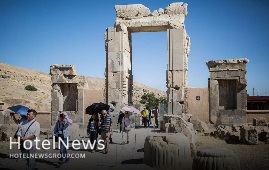
The social and cultural impact of the novel coronavirus on the arenas of tourism and cultural heritage will be explored at a Tehran conference. The event is set to be held at the Research Institute of Cultural Heritage & Tourism (RICHT) on February 17 and 18, according to organizers. Cultural Heritage, Tourism and Handicrafts Minister Ali-Asghar Mounesan, and Minister of Culture and Islamic Guidance Seyyed Abbas Salehi are scheduled to deliver opening speeches. A host of cultural experts, sociologists, academia, Iranologists, archaeologists, have been tourism insiders invited to the event. The average of international travels to and from Iran fell by 84 percent during the first nine months of the current Iranian calendar year (started March 20, 2020) from a year earlier. Passenger traffic from land and air borders during the first nine months of this year compared to the same period last year, decreased by 84.57% in incoming passenger traffic and 84.33% decrease in outgoing passenger traffic, according to the Customs Administration. Furthermore, international tourist arrivals to Iran plunged 72% during the first eight months of the year when compared to 2019, according to data compiled by the World Tourism Organization. Optimistic forecasts, expect the country would achieve a tourism boom after coronavirus contained, believing its impact would be temporary and short-lived for a country that ranked the third fastest-growing tourism destination in 2019. According to a UNWTO Barometer, international arrivals plunged 81% last July and 79% in last August, traditionally the two busiest months of 2020 and the peak of the Northern Hemisphere summer season. The drop until August 2020 represents 700 million fewer arrivals compared to the same period in 2019 and translates into a loss of $730 billion in export revenues from international tourism. UNWTO’s Panel of Experts foresees a rebound in international tourism in 2021, mostly in the third quarter of 2021. However, around 20% of experts suggest the rebound could occur only in 2022.
Create: Feb 17, 2021 Edit: Feb 17, 2021 Regional News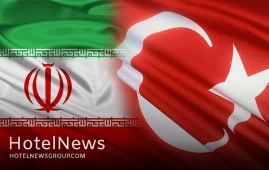
A joint technical committee for tourism cooperation between Iran and Turkey has recently formulated a plan which reportedly could pave the way for bilateral passport-free travels. The proposal is to be discussed in detail by the tourism authorities of the two countries, ISNA reported on Monday. Turkey was among the top ten countries with the most arrivals in Iran during the [Iranian calendar] year 1398 [Mar. 2019 – Mar. 2020], according to data compiled by Iran’s Ministry of Cultural Heritage, Tourism and Handicrafts. Some Iranian travel experts emphasize the need to attain a balance in tourist flow rates between the two nations, saying the Islamic Republic should reach a balance with Turkey in the movement of tourist flow. Last year, Iranian travel agencies introduced a plan to offer stimulus packages and hold familiarization tours for Turkish agencies, tour operators, journalists, and influencers in a bid to attract more travelers from the neighboring country. “Iran will be organizing familiarization tours for about 100 Turkish tourism agencies after the [complete] reopening of joint borders and resuming [mutual] tourist relations,” according to Mehdi Rezaei, the secretary of the Turkey consortium at the Association of Iranian Travel Agents. “Fam tours had been planned for Turkish [travel] agencies and media for a period before the virus pandemic. Unfortunately, at the outset of the outbreak, the tours were postponed to another time when mutual travels are resumed.” “We must go to the heart of Turkey and introduce our country to them. In Iran, there are places that Turks wish to visit, such as the shrines in Neyshabour and Kashan. Many Turks are familiar with Iranian literature and poets, and Hafez’s poems are etched in the memory of many of them. We must develop these capacities.” The spread of the novel coronavirus has plunged the travel and tourism industry and economy in the global scene over the past couple of months as passenger traffic on airlines and hotel occupancy rates have fallen off a cliff compared to the same periods in previous years.
Create: Feb 17, 2021 Edit: Feb 17, 2021 Regional News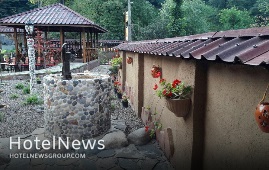
A total of 250 tourism-related projects worth 250 trillion rials ($5.9 billion at the official exchange rate of 42,000 rials per dollar) are being implemented across the northern Iranian province of Mazandaran. On Thursday, Seifollah Farzaneh, the provincial tourism chief, called on potential private investors to help fund the [unfinished] projects to have them implemented ahead of the schedule. “We expect all banks [and potential private investors] to come to the fore to help complete those projects, which are under construction and semi-finished.” This way a large number of native young people will be gaining employment opportunities when these projects are completed, the official said. Elsewhere in his remarks, the official pointed to several tourism projects recently inaugurated across the lush green province. Although the province’s tourism sector is struggling with different problems and issues due to the outbreak of the coronavirus, 23 tourism-related projects were inaugurated across the province on the occasion of Fajr celebrations (Jan. 31- Feb. 10, marking the victory anniversary of the Islamic Revolution), he said. Worth 3.2 trillion rials ($76 million), the recently-inaugurated projects included a 20-room hotel and 22 eco-lodge units, which are expected to create 129 job opportunities for the locals, he explained. Minister of Cultural Heritage, Tourism and Handicrafts Ali-Asghar Mounesan announced in August 2020 that Iran’s travel sector had suffered a loss of 12 trillion rials (some $2.85 billion) since the outbreak of the coronavirus pandemic, however, he mentioned that all the tourism businesses across the country would have the capacity to fully resume their activities both in domestic and foreign markets. “Many tourism projects have been completed, or are being implemented, showing that a very good capacity has been created in the field of tourism in the country and [this trend] should not be stopped,” the minister stated. Mounesan added 2,451 tourism-related projects worth 1,370 trillion rials (around $32 billion) are being implemented across the country that signals a prosperous future for Iran’s tourism sector. The tourism minister also said the coronavirus pandemic should not bring traveling to a complete standstill. “Corona is a fact, but can the virus stop tourism? Certainly not. For us, the coronavirus is a new experience in dealing with crises that teaches tourism experts around the world how to deal with such a disaster, and thankfully governments are turning this into an opportunity for better planning.” Iran expects to reap a bonanza from its numerous tourist spots such as bazaars, museums, mosques, bridges, bathhouses, madrasas, mausoleums, churches, towers, and mansions, of which 24 being inscribed on the UNESCO World Heritage list. Under the 2025 Tourism Vision Plan, it aims to increase the number of tourist arrivals from 4.8 million in 2014 to 20 million in 2025. The latest available data show eight million tourists visited the Islamic Republic during the first ten months of the past Iranian calendar year (started March 21, 2019).
Create: Feb 13, 2021 Edit: Feb 13, 2021 Regional News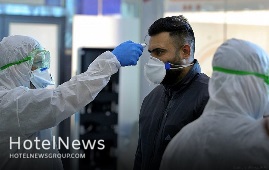
Iran has reduced the validity of negative COVID-19 PCR test results from 96 hours to 72 hours for inbound and outbound passengers. According to the Health Ministry, and the National Headquarters for Coronavirus Control, people flying to or from Iran need to do their PCR test within 72 hours before their flights. The new regulation replaced a role that required to bar passengers from boarding if they do not have a negative COVID test within 96 hours of departure. Iranian citizens without a negative coronavirus PCR test result are subject to medical screening and quarantine for 14 days at their own expense, while non-Iranian nationalities without the certificate are not allowed to enter the country. All passengers are subject to the medical screening on arrival, and if they are suspected of having the disease, non-Iranian nationalities will be quarantined at a place specified by the Health Ministry at their own expense and Iranian citizens will need to self-isolate for 14 days. According to some Iranian airlines, passengers from the United Kingdom, Japan, Botswana, Zimbabwe, Namibia, Seychelles, Angola, Mozambique, Lesotho, Malawi, Zambia, and Mauritius, as well as the travelers who have stayed in these countries for two weeks before entering the Iranian border, due to the spread of a new variant of the coronavirus in these regions, are not allowed to enter the country. The worldwide outbreak of COVID-19 has brought the world to a standstill, and tourism has been the worst affected of all major economic sectors. World tourist arrivals fell by 72% over the first ten months of 2020, according to data compiled by the World Tourism Organization (UNWTO) in December. Restrictions on travel, low consumer confidence, and a global struggle to contain the coronavirus pandemic are amongst factors contributing to the worst year on record in the history of tourism. Iran has also suffered the same fate as its foreign arrivals plunged 72% during the first eight months of 2020 when compared to 2019.
Create: Feb 13, 2021 Edit: Feb 13, 2021 Regional News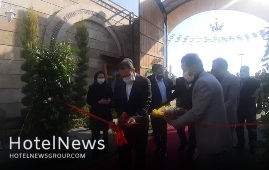
Shams ol-Emareh tourist complex was inaugurated in Baqershahr, south of Tehran province, on Wednesday on the occasion of Ten-Day Dawn (Jan. 31- Feb. 10, marking the victory anniversary of the Islamic Revolution). A budget of 370 billion rials (about $ 9 million at the official exchange rate of 42,000 rials per dollar) has been allocated to the project, Parham Janfeshan, the provincial tourism chief, addressing the opening ceremony. Constructed in an area of 11 hectares, the project is expected to create 30 job opportunities, the official added. Referring to tourism as being “advantageous” for the whole province, the official noted the tourism sector and relevant infrastructure are being developed and strengthened in all districts [and counties] of Tehran province even in low-income and deprived areas. Earlier this week, the official announced that a total of 206 tourism-related projects are scheduled to be inaugurated across the Iranian capital during the ten-day Fajr (dawn) ceremonies and celebrations. Ten accommodation centers including hotels, apartment hotels, eco-lodge units as well as tourist complexes, restaurants, and handicrafts workshops will come on stream, he explained. He also noted that a budget of seven trillion rials (about $167 million) has been allocated to the projects, which are expected to generate a total of 930 job opportunities. The mentioned projects will also add 816 beds to the hospitality sector of the Iranian capital, the official added. Hugging the lower slopes of the magnificent, snowcapped Alborz Mountains, Tehran is much more than a chaotic jumble of concrete and crazy traffic blanketed by a miasma of air pollution. This is the nation's dynamic beating heart and the place to get a handle on modern Iran and what its future will likely be. The metropolis has many to offer its visitors including Golestan Palace, Grand Bazaar, Treasury of National Jewels, National Museum of Iran, Glass & Ceramic Museum, Masoudieh Palace, Sarkis Cathedral, Tehran Museum of Contemporary Art, Carpet Museum of Iran, to name a few. The first time Tehran is mentioned in historical accounts is in an 11th-century chronicle in which it is described as a small village north of Ray. It became the capital city of the Seljuk Empire in the 11th century but later declined with factional strife between different neighborhoods and the Mongol invasion of 1220.
Create: Feb 6, 2021 Edit: Feb 6, 2021 Regional News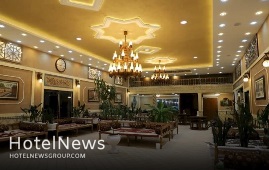
A total of 43 tourism-related projects, worth 645 billion rials ($15.3 million at the official exchange rate of 42,000 rials per dollar), are scheduled to come on stream across the central Iranian province of Yazd on the occasion of Fajr cerebrations (Jan. 31- Feb. 10, marking the victory anniversary of the Islamic Revolution). Nineteen eco-lodge units, two traditional accommodation centers, seven traditional restaurants, two tourist complexes as well as seven projects in the field of cultural heritage, and six projects in the field of handicrafts will be inaugurated, a provincial tourism official said on Thursday. The mentioned projects will come on stream in different cities across the province including Bafq, Taft, Ardakan, Meybod, and Mehriz, Mohammad Mirshamsi added. The projects are expected to generate 247 job opportunities for the locals after being inaugurated, the official added. In July 2017, the historical structure of the city of Yazd was named a UNESCO World Heritage. Wedged between the northern Dasht-e Kavir and the southern Dasht-e Lut on a flat plain, the oasis city enjoys a very harmonious public-religious architecture that dates from different eras. With its winding lanes, forest of badgirs (wind catchers), mud-brick houses, atmospheric alleyways, and centuries of history, Yazd is a delightful place to stay, referring to as a ‘don't miss’ destination by almost all travel associates in the region. Yazd Jameh Mosque, Dowlatabad Garden, the Yazd Atash Behram, also known as Atashkadeh-e Yazd, Towers of Silence, and adjacent desert landscape are among its tourist sites.
Create: Feb 6, 2021 Edit: Feb 6, 2021 Regional News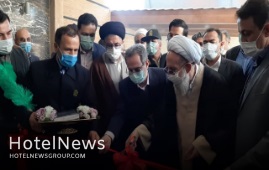
The first-ever hotel in the city of Rey, southeast of Tehran, was inaugurated on Tuesday on the occasion of Ten-Day Dawn (Jan. 31- Feb. 10, marking the victory anniversary of the Islamic Revolution), ISNA reported. The inauguration ceremony was attended by Mohammad Mohammadi Reyshahri, the custodian of the Holy Shrine of Shah Abdol Azim, and Anushiravan Mohseni Bandpey, the governor-general of Tehran province, and several local officials and tourism insiders. A budget of 800 billion rials (about $19 million at the official exchange rate of 42,000 rials per dollar) has been allocated to the project which adds 42 rooms and 108 beds to the hospitality sector of the city, the provincial tourism chief Parham Janfeshan announced on the sidelines of the ceremony. The construction and inauguration of this hotel will lead to the development of religious tourism infrastructure in the city, which will bring more welfare to the pilgrims of the Holy Shrine of Shah Abdol Azim, Janfeshan said. Construction work of the hotel took four years in a piece of land covering more than eight hectares, he added. The history of settlement in Rey dates from the 3rd millennium BC. It is featured in the Avesta (the original document of Zoroastrianism, an Iranian religion) as a sacred place, and it is also mentioned in the book of Tobit, of the biblical Apocrypha, and by classical authors. According to Encyclopedia Britannica, Rey was one of the capital cities of the Parthian empire (3rd century BC–3rd century CE). It was captured by the Muslim Arabs in 641 CE. During the reign of the Muslim caliph al-Mahdi in the 8th century, the city grew in importance until it was rivaled in western Asia only by Damascus and Baghdad. Islamic writers described it as a city of extraordinary beauty, built largely of fired brick and brilliantly ornamented with blue faience (glazed earthenware). It continued to be an important city and was briefly a capital under the rule of the Seljuqs, but in the 12th century, it was weakened by the fierce quarrels of rival religious sects. In 1220 the city was almost entirely destroyed by the Mongols, and its inhabitants were massacred. Most of the survivors of the massacre moved to nearby Tehran, and the deserted remnants of Rey soon fell into complete ruin. Rey, however, retains enough history to give it a different sensibility, its key sight is the elaborately decorated Shah Abdol Azim Shrine. Beside the shrine complex is a lively bazaar, while further afield are a couple of minor historical attractions.
Create: Feb 5, 2021 Edit: Feb 6, 2021 Regional News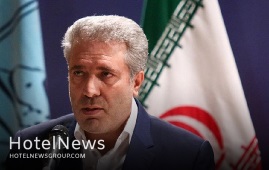
Iran seeks to register ancient Siraf port and several other southern seaports on the UNESCO World Heritage list in near future, Cultural Heritage, Tourism and Handicrafts Minister Ali-Asghar Mounesan has said. “We are developing a dossier [to be submitted to UNESCO] for the global registration of Siraf and several other important ports, [which are dotted across Bushehr province] in the southern coastal strip of the country,” Mounesan said on Tuesday. “The noble people of Bushehr should be waiting for the registration news,” Mounesan noted. He made the remarks during his visit to Bushehr, which is one of the most significant historical regions along the Persian Gulf, embracing significant monuments from the Elamite, Achaemenid, Parthian, and Sassanid eras. The historical port of Siraf was the most important Iranian port from the Sassanid period to the 4th century AH. It bears plentiful evidence of Persian mastership and genius in seafaring, international relations, and interaction with other near and far cultures and civilizations. Between 1966 and 1973, the British Institute of Persian Studies conducted seven seasons of excavation and survey at Siraf, which was a major city on the Iranian shore of the Persian Gulf that played a leading role in the network of maritime trade that supplied Western Asia with the products of India, the Far East, and Eastern Africa between 800 CE and 1050. Siraf had a population of about 300,000 during the early Islamic era and this fact shows that it was a large city. However, today, just about 7,000 people live in Siraf in a small area. The historical and architectural monuments of Bushehr include Islamic buildings like mosques and praying centers, mansions, old towers, castles, as well as gardens. Bushehr province is also home to various archaeological mounds including Tall-e Khandaq with Sassanid architectural style, Tall-e Marv located near an Achaemenid Palace, and Qajar era Malek al-Tojar Mansion. Traveling to the Persian Gulf region would be an experience that you probably haven’t even considered. While you’ve been planning your Iranian sojourn around the jewels of the country’s rich history (Isfahan, Shiraz, Yazd), to the southeast the Persian Gulf is equally deserving. Explore the magnetic islands of Kish, Qeshm, and Hormuz, which are absurdly easy to combine and are altogether different. While Kish is unashamedly glam and glitzy, Qeshm and Hormoz are refreshingly void of large-scale development and offer a chance to glimpse a more traditional way of life – not to mention an array of geological wonders. Along the coast, soak up the vibes of lively Bandar Abbas and make a beeline for the delightful town of Kong, whose historical center is peppered with charming old houses and monuments.
Create: Feb 5, 2021 Edit: Feb 6, 2021 Regional News
Well-planned travels during the Persian New Year (Noruz) holidays, which will start on March 20, would be possible in close coordination with the National Headquarters for Coronavirus Control, the deputy tourism minister said on Tuesday. In order to create social vitality during the holidays, the ministry has set some rules for possible Noruz trips to control and monitor them carefully, Vali Teymouri said. “The trips will be possible only within the framework of planned tours through licensed travel agencies and under the supervision of the tourism ministry.” For people, who travel individually and outside of the tours, a reservation for an authorized accommodation center will be necessary, the official added. He also emphasized that all travelers and tourists need to follow strict health protocols during their trips and stays. Last March, which is the most bustling and booming period for the tourism sector because it culminates in Noruz, all celebrations were canceled in all 31 provinces across the country, and all museums and historical sites, affiliated with the Ministry of Cultural Heritage, Tourism and Handicrafts went on a lockdown due to the coronavirus pandemic. Last year, before the Persian New year, the tourism minister Ali-Asghar Mounesan asked people to postpone or reschedule tours to help the tourism industry deal with the coronavirus outbreak. “My suggestion to my dear people is that they do not cancel their hotel reservations and domestic tours as far as possible to help the tourism industry and prevent it from bankruptcy by making their reservations in time after the virus is controlled.” Iranians made 74 million overnight stays in their domestic trips during the Noruz holidays two years ago (2019), which showed a 20 percent increase year on year. And some 132 million visits to tourist attractions were registered during the mentioned period, which showed a 34 percent growth year on year, according to data compiled by the Ministry of Cultural Heritage, Tourism and Handicrafts. The Islamic Republic was ranked the third fastest-growing tourism destination in the globe in 2019, with 27.9 percent growth year on year, according to the latest statistics released by the United Nations World Tourism Organization (UNWTO). However, the country expects to reap a bonanza from its numerous tourist spots. Under the 2025 Tourism Vision Plan, it aims to increase the number of tourist arrivals from 4.8 million in 2014 to 20 million in 2025.
Create: Feb 4, 2021 Edit: Feb 4, 2021 Regional News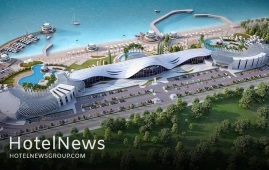
Iranian President Hassan Rouhani on Tuesday inaugurated tens of tourism-related projects via a video conference on the occasion of Ten-Day Dawn (Jan. 31- Feb. 10, marking the victory anniversary of the Islamic Revolution). A total investment value of 14 trillion rials (about $334 million at the official exchange rate of 42,000 rials per dollar) is channeled through the projects countrywide, Cultural Heritage, Tourism, and Handicrafts Minister Ali-Asghar Mounesan announced on Monday. Tourism-related projects worth 220 trillion rials ($5.2 billion) had previously come on stream since President Rouhani inaugurated his second four-year term in 2017. With these new projects being taken into account, the total investments in this sector are added up to 234 trillion rials ($5.5 billion), which is a new record, the tourism minister explained. The Ministry of Cultural Heritage, Tourism and Handicrafts has played an important role in the country’s currency earnings, as in 2019, the tourism sector’s share of the country’s GDP was $11.8 billion, which is a very significant number, Mounesan said. Referring to passenger flows, he stated some 8.8 million foreign nationals visited the Islamic Republic during the first ten months of the past Iranian year 1398(March 20, 2019-March 19, 2020) before the coronavirus outbreak puts almost everything on a halt. Despite the coronavirus pandemic and the damages it has caused to the country’s tourism, this sector is still running and several projects are underway, the official added. Back in August, the minister announced that Iran’s travel sector has suffered a loss of 12 trillion rials (some $2.85 billion) since the outbreak of the coronavirus pandemic, however, he mentioned that all the tourism businesses across the country will have the capacity to fully resume their activities both in domestic and foreign markets. “Many tourism projects have been completed, or are being implemented, showing that a very good capacity has been created in the field of tourism in the country and [this trend] should not be stopped,” he explained. Mounesan went on to say that 2,451 tourism-related projects worth 1,370 trillion rials (around $32 billion) are being implemented across the country that signals a prosperous future for Iran’s tourism sector. The tourism minister also said the coronavirus pandemic should not bring traveling to a complete standstill. “Corona is a fact, but can the virus stop tourism? Certainly not. For us, the coronavirus is a new experience in dealing with crises that teaches tourism experts around the world how to deal with such a disaster, and thankfully governments are turning this into an opportunity for better planning.” Some experts believe that the coronavirus pandemic may turn tours and travels into luxury items as observing health protocols will raise the cost of travel in the country. Mohammad Ali Vaqefi, the vice president of the Iranian Tour Operators Association, warned earlier in June that with the continuation of the coronavirus outbreak, tourists may prefer individual travel rather than tours, adding that they may also choose to go on a trip by their vehicles and stay in tents or nature instead of hotels. In the global scene, part of the new travel puzzle is the jet-set mindset focusing on tough hygiene care and social distancing as cardinal guidelines for slowing the spread of the virus. So the average expenditure will be raised for a typical traveler particularly inbound passengers so lesser ones can afford to buy privacy and space and safer travel amenities. Iran expects to reap a bonanza from its numerous tourist spots such as bazaars, museums, mosques, bridges, bathhouses, madrasas, mausoleums, churches, towers, and mansions, of which 24 being inscribed on the UNESCO World Heritage list. Under the 2025 Tourism Vision Plan, it aims to increase the number of tourist arrivals from 4.8 million in 2014 to 20 million in 2025. The latest available data show eight million tourists visited the Islamic Republic during the first ten months of the past Iranian calendar year (started March 21, 2019).
Create: Feb 4, 2021 Edit: Feb 4, 2021 Regional News
